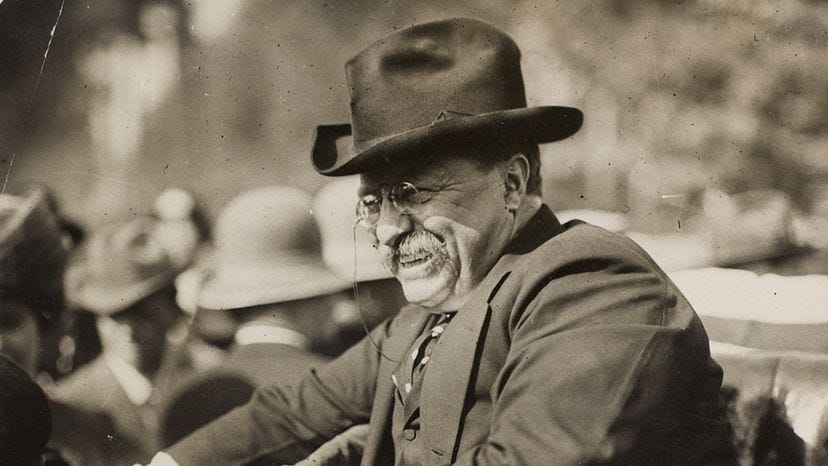Maybe you’ve failed lots of time. Maybe you haven’t failed much at all. But when failure does arrive, how do you want to respond?
Teddy Roosevelt was famous for his approach to failure and hardship. An adventurer, an athlete, and a man who was driven to take on physical challenges, he responded to failure by turning to hard things, seeking to push his mind and body to the edge. In 1912, Roosevelt lost the Presidential race to Woodrow Wilson in dramatic fashion. Following the loss, his family became worried noting that his spirit appeared broken. During this time, Roosevelt spent long hours in his study, writing letters to his friends and family. He wrote to a friend “I expected defeat, but I had expected that we would make a better showing. I try not to think of the damage to myself personally.”
Within a few months, however, Roosevelt had his sights set on his next challenge: an expedition into an uncharted portion of the Amazon river, known locally as The River of Doubt, a name that ominously underscored its unknown dangers and navigability. This was at a time when technology and medical aid were limited, and the risk of taking on an expedition of this scale was incredibly high. The expedition brought on sickness and disease, starvation, and intense physical labor throughout the journey. It was only with help from native people of the region that Roosevelt and his crew were able to successfully complete their mission and return home.
We can all learn from Roosevelt when it comes to failure and loss in our own lives.
Sometimes we fail due to things out of our control. We only have so much influence in the world around us. If you’ve failed, reflect on what you had control over, and what you did not. Roosevelt could control aspects of his campaign such as his speeches, his response to opposition, or his policy recommendations, but he can’t control how voters respond, the political climate, or what his competitors are doing. There’s no benefit in beating yourself up about things you can’t control and internalizing them. Take ownership of the things you can directly influence and develop a plan to move forward.
The emotions that come with failure are natural—make room for them. Falling short of your goal sucks. It’s normal to feel disappointed, frustrated, or angry when you don’t achieve something that’s really important to you. What you do with those emotions, however, can propel you into a productive path forward. Taking the time to actually sit with and unpack those difficult feelings can be a powerful way to work through the process of failure. Roosevelt turned to pen and paper and his closest friends and family to express his thoughts. Putting labels to difficult emotions, a process known as affect labeling, or engaging in therapeutic journaling can promote greater clarity, help offer new perspectives, and benefit wellbeing (Mirgain & Singles, 2023; Lieberman et al., 2007).
Onward: Set a new target and lean in. Failure is not the end. So what next? How do you want to respond? Roosevelt responded to failure by immersing himself in more challenge—creating opportunities to prove to himself that a single point of failure does not determine the future. Jud Brewer, director at Brown University’s Mindfulness Center, refers to this as a process of finding the FGO—short for “Freaking Growth Opportunity.” Your FGO doesn’t have to be an intercontinental trip to do something no one else has done before, but something that challenges you to grow. Something that pushes you to problem solve, to think outside the box, to plan and prepare, or requires hard effort. These are likely qualities you emulated on the path to your initial goal. Don’t lose sight of your capacity to perform in the shadows of a loss—let your actions be a reminder of what you’re capable of accomplishing.
Find your blind spots. There’s an old saying that points to the benefits of asking for help: “Go alone, go faster. Go together, go further.” Without the help of the indigenous people of the Amazon, there’s a chance that Roosevelt wouldn’t have reached his goal at all. When you look to others for support, you create opportunities for new perspective, new strategies, and shine light on potential blind spots. Russ Harris, a Medical Doctor and Acceptance and Commitment Therapy practitioner, shares the two mountains metaphor to help illustrate this point. He says (I’m paraphrasing), “I can’t climb your mountain for you, but my perspective allows me to see obstacles and dangers on your path that you may not be able to see, and suggest an alternate route.”
Failure is a gift if you allow it to be. It’s the ultimate form of feedback, providing you a snapshot of your strengths, your weaknesses, the strategies and tactics that worked, and those that didn’t. It’s like closing off paths in a maze, reducing the number of routes that can lead you astray, enabling you to focus your effort and energy into exploring new solutions and opportunities that put you closer to your goal.
It’s cliche to say that you learn from failure—we all know this. But what you cannot afford to overlook is the discipline it takes to evaluate, process, and respond to failure in a way that moves you forward. Resilience and strength aren’t built by accident. These are outcomes that result from intentional effort and hard work. The root of the word resilience is resilire which means to “jump back” or “recoil.” Resilience is different than grit, which is your perseverance and commitment to a goal over time. Grit, therefore, is a function of resilience. Your perseverance over the long run depends on how you respond to adversity along the way. Can you get back up, reorient yourself, and move forward? It’s not about speed. Rather, it’s about gathering yourself in a manner that leaves you more informed and better equipped to attack your next target.




